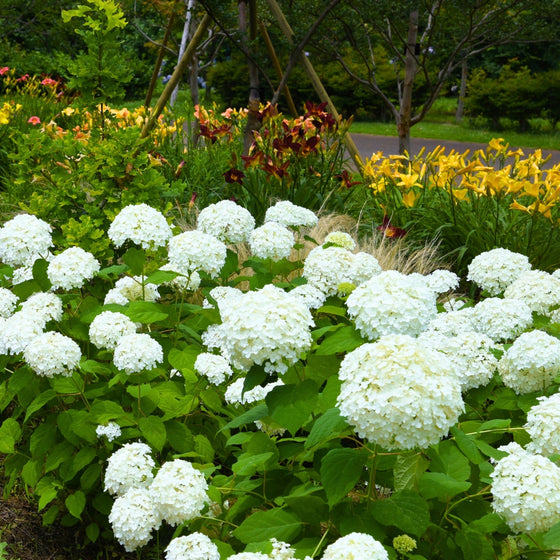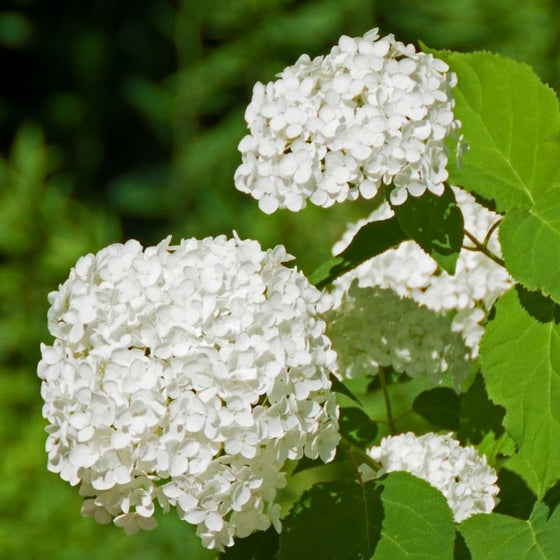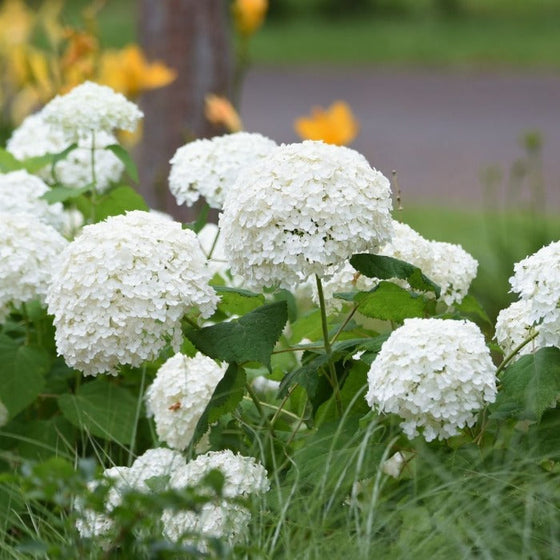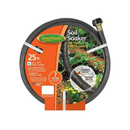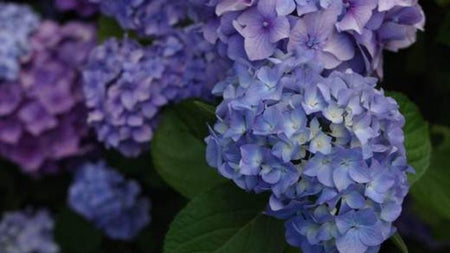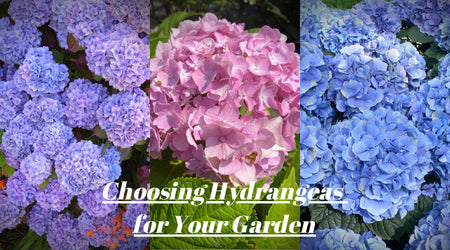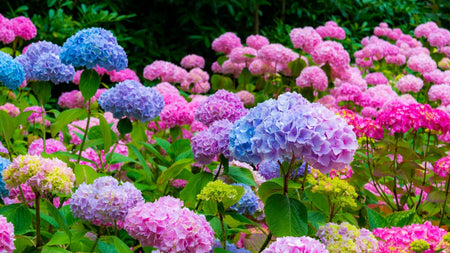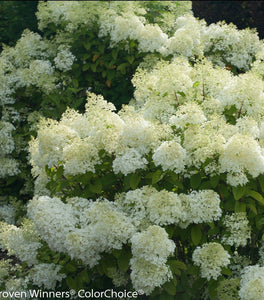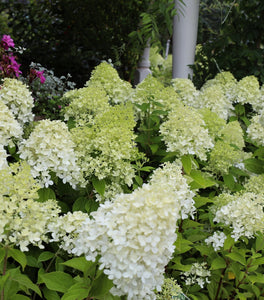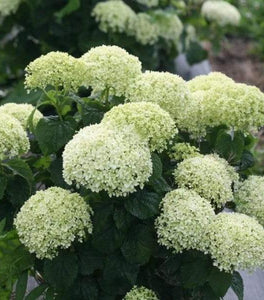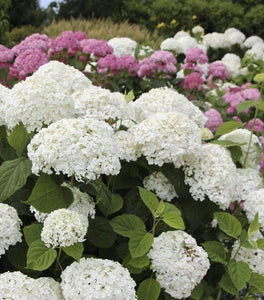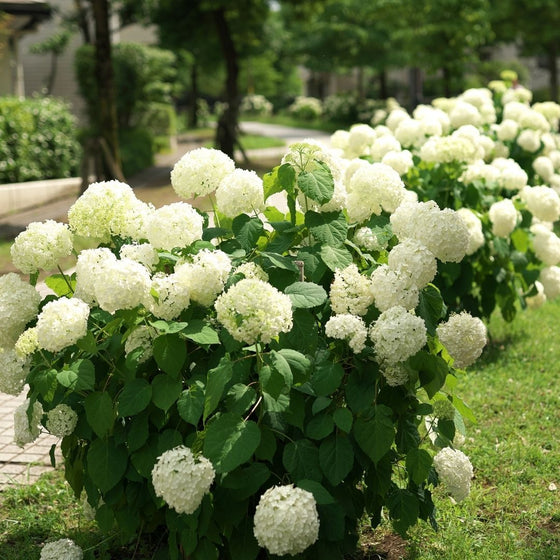
Images Depict Mature Plants
Annabelle Hydrangea – Hardy White Flowering Shrub for Summer Landscapes
The classic white hydrangea that started it all.
The Annabelle Hydrangea (Hydrangea arborescens ‘Annabelle’) is an American garden favorite, celebrated for its enormous snowball-like clusters of pure white blooms. Each flower head can reach up to 12 inches wide, transforming your landscape into a soft cloud of color from early summer through fall. Its cold-hardy and adaptable nature makes it one of the most reliable flowering shrubs you can grow across the country.
A showstopper with effortless charm.
Annabelle Hydrangea’s rounded habit, lush green foliage, and long bloom period make it a versatile addition to both formal landscapes and cottage gardens. Whether planted in rows along a walkway or featured as a striking accent in a mixed border, this shrub delivers season-long beauty with minimal care. The blooms also make exceptional cut flowers for fresh or dried arrangements.
Easy to grow and low maintenance.
Unlike more finicky hydrangeas, Annabelle thrives in full sun to partial shade and tolerates a wide range of soils. It’s cold-hardy to Zone 3, heat-tolerant, and known for its reliable reblooming habit. Once established, it withstands summer heat and even brief droughts while continuing to produce full clusters of creamy white blooms.
Perfect for every garden style.
From elegant front yard plantings to massed foundation borders, Annabelle brings instant refinement and four-season structure. In autumn, its blooms fade to a delicate greenish tan that persists into winter, adding texture and contrast. Few plants combine such beauty, resilience, and timeless appeal in one compact shrub.
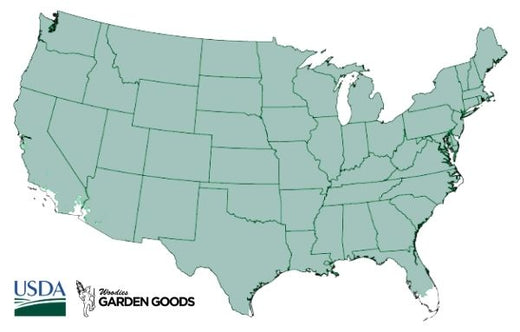
| Hardiness Zone: | 3-9 |
|---|---|
| Mature Height: | 4-6 feet |
| Mature Width: | 4-6 feet |
| Classification: | Broad leaved deciduous shrub, summer flowering |
| Sunlight: | Full to partial sun |
| Habit: | Upright |
| Foliage: | Dark green |
| Flower Color: | Pure white |
| Pruning Season: | Prune in late winter, flowers on new wood |
| Soil Condition: | Any well drained soil |
| Water Requirements: | Water well until established |
| Uses: | Extremely attractive when used as a focal point in the mixed border, mass planting, or a specimen planting |
How to Care for Annabelle Hydrangea
Be sure to read our planting instructions to ensure a healthy and happy Annabelle Hydrangea for years to come!
How do I plant an Annabelle Hydrangea?
Plant in full sun to partial shade, ideally receiving at least 4–6 hours of morning light. Dig a hole twice as wide as the root ball and the same depth. Loosen the soil at the bottom for better drainage. Position your hydrangea so the top of the root ball sits level with the soil surface, then backfill with enriched soil and water deeply. After planting, apply a 2–3 inch layer of mulch around the base to retain soil moisture and regulate temperature. Mulch also helps protect roots during winter and keeps weeds down.
How often should I water Annabelle Hydrangea?
Water your Annabelle Hydrangea deeply 1–2 times per week, especially during hot or dry weather. Keeping the soil consistently moist (but not soggy) helps the plant produce larger, longer-lasting blooms. Once established, it becomes more drought tolerant than many hydrangea varieties but will bloom most abundantly with regular watering and mulch to conserve soil moisture.
When should I fertilize my Annabelle Hydrangea?
Fertilize in early spring using a balanced, slow-release shrub fertilizer (such as 10-10-10). This encourages strong stems and healthy foliage before blooming season. Avoid high-nitrogen fertilizers, which promote leafy growth at the expense of flowers. Feeding once per year is typically sufficient to maintain lush color and continuous blooms.

How and when do I prune Annabelle Hydrangea?
Prune Annabelle Hydrangea in late winter or early spring before new growth begins. Cut back stems to about 12–18 inches from the ground to encourage sturdy new shoots and bigger blooms. Deadhead spent flowers throughout summer to keep the plant looking neat and to promote additional flowering. Unlike some hydrangeas, Annabelle blooms on new wood, so annual pruning won’t affect flowering.

